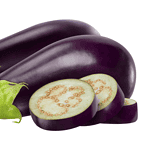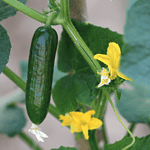Introduction How to Plant Parsnip Seeds

Parsnips, with their sweet and earthy flavor, are a delightful addition to any garden or culinary dish. To ensure a bountiful harvest of these tasty root vegetables, proper planting techniques are essential. In this guide, How to Plant Parsnip Seeds we’ll explore the step-by-step process of planting parsnip seeds for maximum germination.
What are Parsnip Seeds?
Parsnip seeds are small, oval-shaped seeds that give birth to the parsnip plant. These seeds contain all the genetic material necessary to sprout and grow into mature parsnip plants.
Preparing for Planting
Before diving into the planting process, it’s crucial to make some preparations to set the stage for successful germination.
Choosing the Right Seeds
Select high-quality parsnip seeds from reputable suppliers or trusted sources. Look for seeds that are fresh, plump, and free from any signs of damage or decay.
Selecting the Perfect Location
Parsnips thrive in well-drained, fertile soil with plenty of sunlight. Choose a location in your garden that receives full sun for at least six to eight hours a day. Avoid areas with compacted soil or excessive shade.
Preparing the Soil

The foundation of a successful parsnip crop lies in the soil. Properly preparing the soil ensures optimal conditions for seed germination and plant growth.
Soil Quality Assessment
Test the soil in your chosen planting area to assess its pH level and nutrient content. Parsnips prefer slightly acidic to neutral soil with a pH range of 6.0 to 7.0. Amend the soil as needed to achieve the ideal pH level and improve soil fertility.
Amending the Soil
Incorporate organic matter such as compost or well-rotted manure into the soil to enhance its structure and fertility. Work the amendments into the soil to a depth of at least 8 to 10 inches using a garden fork or tiller.
Planting Parsnip Seeds

Now that the groundwork is laid, it’s time to sow the parsnip seeds and kickstart the germination process.
Sowing Techniques
There are two primary methods for sowing parsnip seeds: direct sowing and indoor sowing. Direct sowing involves planting the seeds directly into the garden soil, while indoor sowing entails starting the seeds indoors in pots or trays before transplanting them into the garden.
Seed Spacing and Depth
Plant parsnip seeds about half an inch deep in the soil, spaced approximately 2 to 3 inches apart in rows. Ensure proper spacing between the rows to allow ample room for the plants to grow and develop.
Watering and Care
Consistent moisture is key to successful germination and healthy plant growth. Proper watering and care practices are essential to support the growing parsnip seedlings.
Proper Watering Practices
Keep the soil consistently moist but not waterlogged during the germination period. Water the seeds gently with a watering can or hose to avoid disturbing the soil or displacing the seeds.
Pest and Disease Management
Monitor the plants regularly for signs of pests or diseases and take appropriate measures to control them. Protect the young seedlings from common pests such as carrot rust flies and carrot weevils by covering them with row covers or using organic pest control methods.
Monitoring Growth
As the parsnip seeds germinate and grow into seedlings, it’s essential to keep a close eye on their progress and provide the necessary care and attention.
Germination Period
Parsnip seeds typically take about 14 to 21 days to germinate under optimal conditions. During this period, maintain consistent moisture levels and protect the seeds from drying out or being washed away.
Seedling Care
Once the seedlings emerge, thin them out to ensure proper spacing and airflow between the plants. Mulch around the base of the plants to conserve moisture, suppress weeds, and regulate soil temperature.
Harvesting Parsnips
After weeks of diligent care and nurturing, it’s time to reap the rewards of your labor by harvesting fresh, flavorful parsnips from the garden.
Timing the Harvest
Parsnips are typically ready for harvest 90 to 120 days after planting, depending on the variety and growing conditions. Harvest the roots when they reach their full size and have developed a deep, rich color.
Harvesting Techniques
Carefully loosen the soil around the base of the plants with a garden fork to avoid damaging the roots. Gently pull the parsnips from the ground, taking care not to break or bruise them. Trim off the tops and wash the roots thoroughly before storing or using them.
Conclusion
Planting parsnip seeds for maximum germination requires careful planning, preparation, and attention to detail. By following the steps outlined in this guide, you can ensure a successful harvest of delicious, homegrown parsnips that will delight your taste buds and enhance your culinary creations.
Now that you’re armed with the knowledge of planting parsnip seeds for maximum germination, it’s time to roll up your sleeves and get your hands dirty. With a little patience, care, and attention, you can enjoy a plentiful harvest of fresh, homegrown parsnips straight from your garden.
Remember, gardening is a journey filled with learning and discovery. Don’t be discouraged by setbacks or challenges along the way. Embrace the process, experiment with different techniques, and celebrate the joys of nurturing life from seed to harvest.
So, grab your gardening tools and embark on the rewarding adventure of planting parsnip seeds. With each seed you sow, you’re not just cultivating a crop – you’re nurturing a connection to the earth and reaping the rewards of your labor in the form of delicious, homegrown goodness.
Happy gardening!
FAQs
How long does it take for parsnip seeds to germinate?
Parsnip seeds typically germinate within 14 to 21 days under optimal conditions.
Can I plant parsnip seeds directly in the ground?
Yes, parsnip seeds can be planted directly into the garden soil or started indoors in pots or trays before transplanting.
What are common issues when growing parsnips from seeds?
Common issues when growing parsnips from seeds include poor germination, pest infestations, diseases such as damping-off, and improper soil conditions.
How do I know when parsnips are ready to harvest?
Parsnips are ready to harvest when they reach their full size and develop a deep, rich color. Typically, this occurs 90 to 120 days after planting.
Can I save seeds from harvested parsnips for replanting?
Yes, you can save seeds from harvested parsnips for replanting. Allow the parsnip plants to bolt and produce seed heads towards the end of their growing season. Once the seed heads have dried and turned brown, carefully collect the seeds and store them in a cool, dry place for future planting.
What are common issues when growing parsnips from seeds?
Common issues when growing parsnips from seeds include poor germination, pest infestations, diseases such as damping-off, and improper soil conditions.
How do I know when parsnips are ready to harvest?
Parsnips are ready to harvest when they reach their full size and develop a deep, rich color. Typically, this occurs 90 to 120 days after planting.
Latest Posts
- How to Plant Parsnip Seeds for Maximum Germination

- How to Plant Mushroom Seeds for Maximum Germination

- How to Plant Lettuce Seeds for Maximum Germination

- How to Plant Kale Seeds: A Step-by-Step Guide to Maximum Germination Success!

- How to Plant Eggplant Seeds: A Step-by-Step Guide to Maximum Germination Success!

- How to Plant Cucumber Seeds for Maximum Germination




